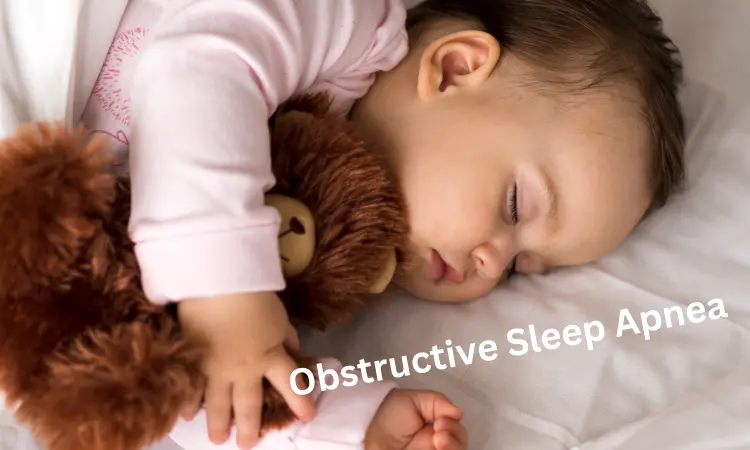- Home
- Medical news & Guidelines
- Anesthesiology
- Cardiology and CTVS
- Critical Care
- Dentistry
- Dermatology
- Diabetes and Endocrinology
- ENT
- Gastroenterology
- Medicine
- Nephrology
- Neurology
- Obstretics-Gynaecology
- Oncology
- Ophthalmology
- Orthopaedics
- Pediatrics-Neonatology
- Psychiatry
- Pulmonology
- Radiology
- Surgery
- Urology
- Laboratory Medicine
- Diet
- Nursing
- Paramedical
- Physiotherapy
- Health news
- Fact Check
- Bone Health Fact Check
- Brain Health Fact Check
- Cancer Related Fact Check
- Child Care Fact Check
- Dental and oral health fact check
- Diabetes and metabolic health fact check
- Diet and Nutrition Fact Check
- Eye and ENT Care Fact Check
- Fitness fact check
- Gut health fact check
- Heart health fact check
- Kidney health fact check
- Medical education fact check
- Men's health fact check
- Respiratory fact check
- Skin and hair care fact check
- Vaccine and Immunization fact check
- Women's health fact check
- AYUSH
- State News
- Andaman and Nicobar Islands
- Andhra Pradesh
- Arunachal Pradesh
- Assam
- Bihar
- Chandigarh
- Chattisgarh
- Dadra and Nagar Haveli
- Daman and Diu
- Delhi
- Goa
- Gujarat
- Haryana
- Himachal Pradesh
- Jammu & Kashmir
- Jharkhand
- Karnataka
- Kerala
- Ladakh
- Lakshadweep
- Madhya Pradesh
- Maharashtra
- Manipur
- Meghalaya
- Mizoram
- Nagaland
- Odisha
- Puducherry
- Punjab
- Rajasthan
- Sikkim
- Tamil Nadu
- Telangana
- Tripura
- Uttar Pradesh
- Uttrakhand
- West Bengal
- Medical Education
- Industry
Socioeconomic disadvantage not linked with severe OSA or residual OSA in children

Pediatric Obstructive Sleep Apnea (OSA) is a sleep disorder affecting a child's breathing is partially or completely blocked during sleep. The condition occurs when the upper airway narrows or is blocked during sleep. In children, untreated OSA is said to cause various negative consequences, including behavioral problems, cognitive deficits, excessive daytime sleepiness, impaired academic performance, and long-term effects on cardiovascular and endocrine systems.
The Area Deprivation Index (ADI) is not significantly associated with severe OSA or residual OSA in children. Although more neighborhood-level disadvantage might be a increased the risk of comorbidities associated with OSA, However, there was an association seen between obesity and severe obstructive sleep apnea in children reveals a case control study published in journal Laryngoscope Investigative Otolaryngology.
A retrospective case control study was conducted on 249 children who underwent adenotonsillectomy and had full-night polysomnography conducted within 6 months prior. Patients were divided into more or less socioeconomically disadvantaged groups using a validated measure, the area deprivation index (ADI). The area deprivation index (ADI) is a metric of neighborhood-level disadvantage that combines 17 social determinants of health, including education, employment, housing, and poverty measures, as reported in the American Community Survey. The primary outcomes were the relationship between the apnea–hypopnea index (AHI) and the presence of severe OSA, and the secondary outcome was residual moderate or greater OSA after tonsillectomy.
The key findings of the study are
• A total of the 249 children included in the study, 175 (70.3%) were socially disadvantaged (ADI > 50). The median (interquartile range [IQR]) age was 9.4 (7.3–12.3) years, 129 (51.8%) were male, and the majority were White (151, 60.9%), Black (51, 20.6%), and/or of Hispanic (155, 62.5%) ethnicity.
• A total of 140 (56.2%) children were obese. The median (IQR) AHI was 8.9 (3.9–20.2). There was no significant difference in the median AHI or the presence of severe OSA between the more and less disadvantaged groups.
• Severe OSA was found to be associated with obesity (odds ratio [OR] = 3.13, 95% confidence interval [CI] = 1.83–5.34), and residual moderate or greater OSA was associated with older age (OR = 1.20, 95% CI = 1.05–1.38).
Researchers concluded that “The ADI was not significantly associated with severe OSA or residual OSA in this cohort of children. Although more neighborhood-level disadvantage may increase the risk of comorbidities associated with OSA, it was not an independent risk factor in this study.”
Reference: Jenny Kim BA, Yann-Fuu Kou MD, Stephen R. Chorney MD, MPH, Ron B. Mitchell MD, Romaine F. Johnson MD, MPH; Assessment of neighborhood-level disadvantage and pediatric obstructive sleep apnea severity; 20 June 2023, Laryngoscope Investigative Otolaryngology, DOI: https://doi.org/10.1002/lio2.1098.
MSc. Neuroscience
Niveditha Subramani a MSc. Neuroscience (Faculty of Medicine) graduate from University of Madras, Chennai. Ambitious in Neuro research having worked in motor diseases and neuron apoptosis is interested in more of new upcoming research and their advancement in field of medicine. She has an engrossed skill towards writing and her roles at Medical dialogue include Sr. Content writer. Her news covers new discoveries and updates in field of medicine. She can be reached at editorial@medicaldialogues.in
Dr Kamal Kant Kohli-MBBS, DTCD- a chest specialist with more than 30 years of practice and a flair for writing clinical articles, Dr Kamal Kant Kohli joined Medical Dialogues as a Chief Editor of Medical News. Besides writing articles, as an editor, he proofreads and verifies all the medical content published on Medical Dialogues including those coming from journals, studies,medical conferences,guidelines etc. Email: drkohli@medicaldialogues.in. Contact no. 011-43720751


